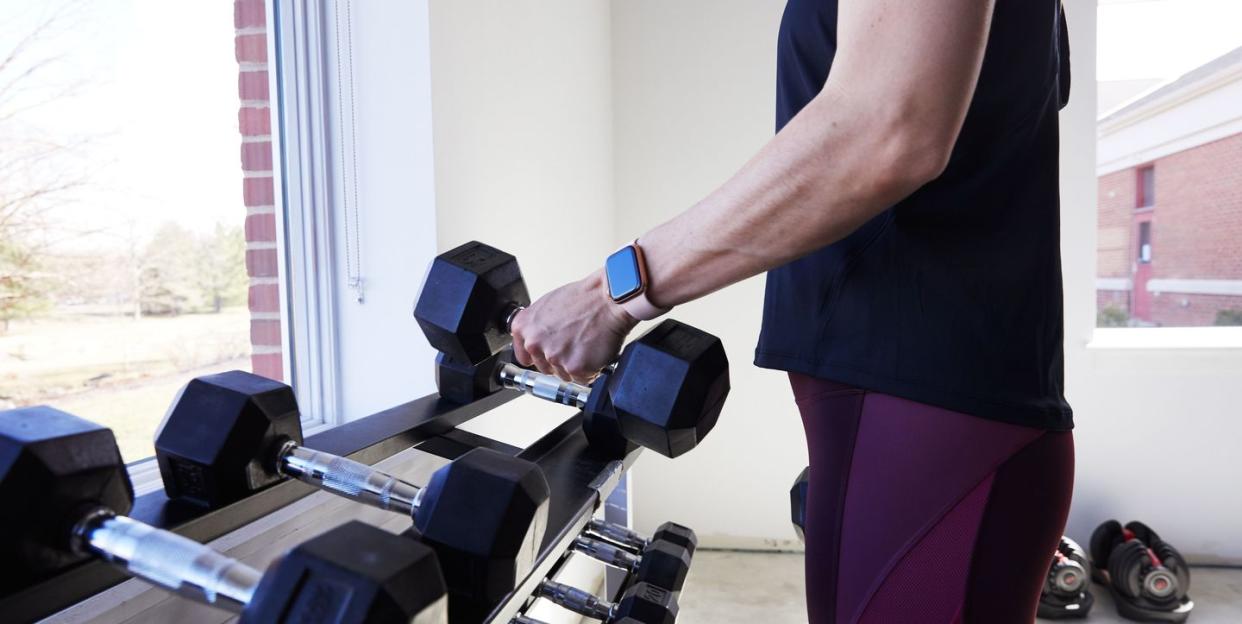You Can Fit in Upper-Body Workouts Without Hurting Your Training

- Oops!Something went wrong.Please try again later.
According to new research published in the journal Medicine & Science in Sports & Exercise, upper-body exercise just before cycling can induce enough fatigue to significantly diminish your performance.
It might be best to follow a training plan that doesn’t stack upper-body workouts and cycling on the same day—or in some cases, even in the same week—if you’re training for a race and focusing on increasing your speed and power output.
If you have limited time on a training day, and your schedule only allows for you to squeeze in some upper-body work before you ride, you may think that’s okay, considering you're training different parts of the body for each.
Well, here’s one reason why that might not the best idea: A recent study in the journal Medicine & Science in Sports & Exercise suggests that upper-body exercise just before cycling can induce enough fatigue to significantly diminish your performance.
Researchers recruited 10 endurance-trained men and had them perform three-minute sessions of all-out cycling, both with prior upper-body strength exercises and without.
According to lead study author Michael Johnson, Ph.D., senior lecturer of exercise physiology at Nottingham Trent University in the U.K., the upper body-exercise involved an intermittent arm-cranking exercise (i.e. cycling using your arms). The participants performed eight rounds of the exercise for one minute each, with 30 seconds of rest in between each round. There was a four-minute period that separated the upper-body workout and the subsequent all-out cycling test.
“The intensity of the upper-body exercise was high such that, especially toward the end of the protocol, it was very challenging for the participants to complete the one-minute bout,” Johnson told Bicycling.
Researchers found there was a considerable difference in terms of how much each person was fatigued during the cycling session, based on those pre-cycling exercises.
“Heavy upper-body exercise reduces the ability to sustain power output during a subsequent cycling exercise, thereby reducing overall cycling performance,” Johnson said.
[The Beginner’s Guide to Strength Training will teach you all the fundamentals to get the most out of your weight session.]
Why would upper-body work affect lower-body efficiency? Johnson said it’s likely because work done in your arms and legs affects “central fatigue,” the process in your brain that signals tiredness.
“Fatigue in the upper-body muscles may exacerbate central fatigue during subsequent exercise, impairing the ability to activate other muscles, like those in the legs,” he said.
Plus, your upper body still does a fair share of work when it comes to cycling. “Being strong in the upper body allows cyclists to hold a better position on the bike,” Brian Levine, a USA Triathlon Level I coach and cyclist, previously told Bicycling. “It means you don’t have to strain, and prevents tension from building up in your shoulders and neck.”
Although this was a small study, results were similar to a previous study done by Johnson and his colleagues in 2016, which also showed that cycling performance was negatively affected by prior upper-body exercise. In that research, seven cyclists went through a three-minute all-out cycling test as well, and the results were the same: When upper-body exercises are done before hopping on the bike, cyclists lost some measure of power.
Keep in mind that when trying to translate into your own workout routine, tests done in a lab can be different than your efforts in a more everyday capacity, Kourtney Thomas, C.S.C.S., told Bicycling.
That said, she suggests following a training plan that doesn’t stack upper-body workouts and cycling on the same day—or in some cases, even in the same week, if you’re training for a race and focusing on increasing your speed and power output.
Also, she added, the study specified an intense upper-body workout as a performance killer. That means it may be possible to do some general, total-body strength training on the lighter or more moderate side—with an adequate amount of rest between the workout and your ride—and get the benefits without sacrificing your cycling gains.
“For a longer-term training schedule strategy, most people could get by with two to three strength-training days either on non-riding days, or potentially doing easier-effort strength training on riding days,” said Thomas. “Also, allow enough time for that fatigue recovery, and always incorporate one full rest day a week.”
You Might Also Like

